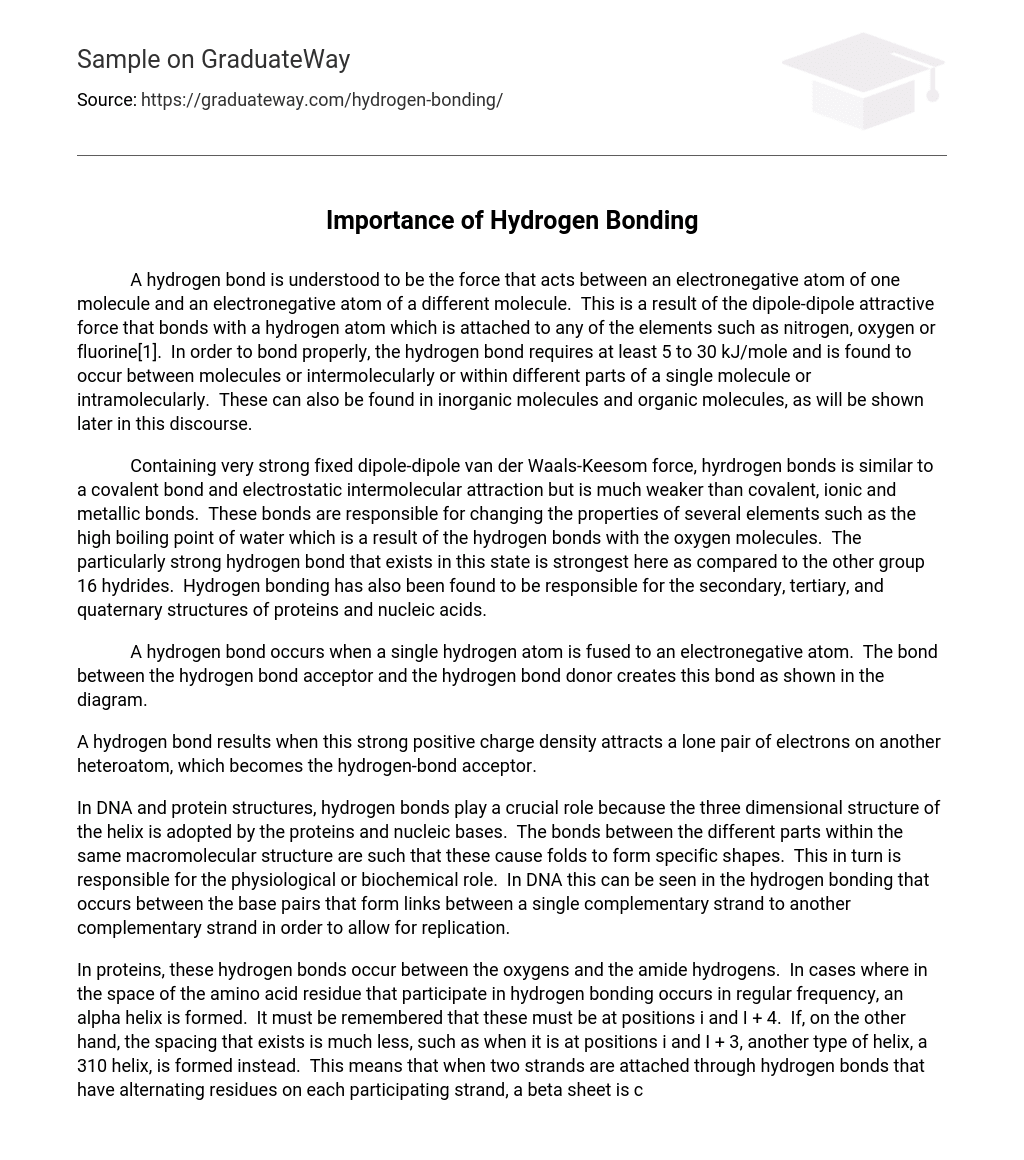A hydrogen bond is understood to be the force that acts between an electronegative atom of one molecule and an electronegative atom of a different molecule. This is a result of the dipole-dipole attractive force that bonds with a hydrogen atom which is attached to any of the elements such as nitrogen, oxygen or fluorine[1]. In order to bond properly, the hydrogen bond requires at least 5 to 30 kJ/mole and is found to occur between molecules or intermolecularly or within different parts of a single molecule or intramolecularly. These can also be found in inorganic molecules and organic molecules, as will be shown later in this discourse.
Containing very strong fixed dipole-dipole van der Waals-Keesom force, hyrdrogen bonds is similar to a covalent bond and electrostatic intermolecular attraction but is much weaker than covalent, ionic and metallic bonds. These bonds are responsible for changing the properties of several elements such as the high boiling point of water which is a result of the hydrogen bonds with the oxygen molecules. The particularly strong hydrogen bond that exists in this state is strongest here as compared to the other group 16 hydrides. Hydrogen bonding has also been found to be responsible for the secondary, tertiary, and quaternary structures of proteins and nucleic acids.
A hydrogen bond occurs when a single hydrogen atom is fused to an electronegative atom. The bond between the hydrogen bond acceptor and the hydrogen bond donor creates this bond as shown in the diagram.
A hydrogen bond results when this strong positive charge density attracts a lone pair of electrons on another heteroatom, which becomes the hydrogen-bond acceptor.
In DNA and protein structures, hydrogen bonds play a crucial role because the three dimensional structure of the helix is adopted by the proteins and nucleic bases. The bonds between the different parts within the same macromolecular structure are such that these cause folds to form specific shapes. This in turn is responsible for the physiological or biochemical role. In DNA this can be seen in the hydrogen bonding that occurs between the base pairs that form links between a single complementary strand to another complementary strand in order to allow for replication.
In proteins, these hydrogen bonds occur between the oxygens and the amide hydrogens. In cases where in the space of the amino acid residue that participate in hydrogen bonding occurs in regular frequency, an alpha helix is formed. It must be remembered that these must be at positions i and I + 4. If, on the other hand, the spacing that exists is much less, such as when it is at positions i and I + 3, another type of helix, a 310 helix, is formed instead. This means that when two strands are attached through hydrogen bonds that have alternating residues on each participating strand, a beta sheet is created.
[1] It must be remembered that this is not to be interchanged with a covalent bond to hydrogen which is a different matter.





